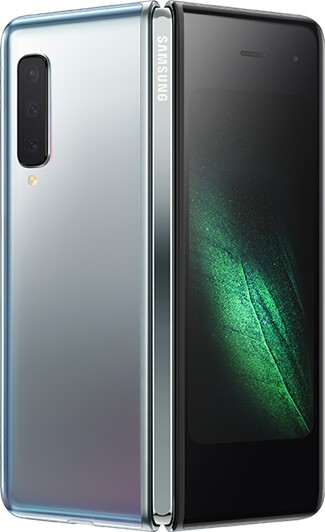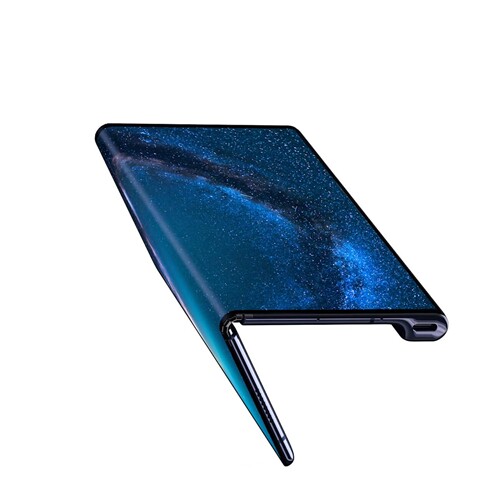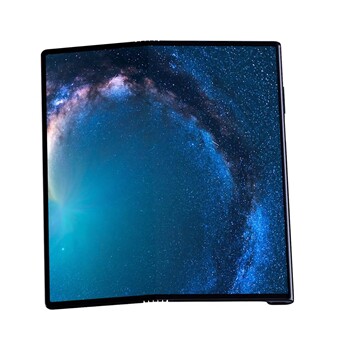Foldable smartphones are finally here after years of expectation and anticipation The biggest potential advantage of foldable smartphone is that it can offer “thin, light, unbreakable larger display for smartphone in a smaller form factor”.

In a slowing demand market, foldable phones offer potentially higher growth, ASP, revenue and profitability opportunities for panel and smartphone suppliers. Samsung and Huawei have already unveiled foldable smartphones in February (In, Out, In, Out and Shake it all about!) with plans to ship products in the next few months. Other vendors are already starting to join in or expected to enter in the near future. In spite of innovative designs and differentiating form factors, foldable smartphones still face many challenges including extremely high prices, design issues, durability issues, lack of acceptable industry standards and uncertainties about consumer acceptance. Can foldable smartphone reach the mainstream mass market?
Foldable design revolution
Royole’s FlexPai was the first foldable smartphone to be introduced, at the end of last year. Samsung introduced Galaxy Fold, an inward folding (AMOLED) product with a front cover supporting a 4.6” front display (1960×840, 21: 9 format) and a 7.3”main display (2152×1536, 4.2:3 format). Samsung replaced the cover glass with a flexible polymer cover film, used new types of adhesive, and a hinge mechanism that has multiple interlocking systems.
Huawei unveiled the Mate X, a 5G foldable (foldable OLED) smartphone at MWC with an outward fold and a 8” (2480x 2200, 8:7.1 format) main display that can fold to 6.6” (2480×1148, 19.5:9 format)) on the front and 6.38” (2480 x 892, 25:9 format) display on the back. Other smartphone suppliers such as Oppo, Vivo, Xiaomi, and Lenovo are expected to follow them in 2019. Xiaomi has shown a video of a dual folding phone prototype. Apple has not announced any plan for foldable iPhones, but expected to introduce one in 2020. It has already many patents including designs showing ways to reduce display-folding issues. Many more companies are expected to enter the foldable 5G smartphone market in 2020 with new designs.
Samsung’s Galaxy Fold

Hope for higher fab utilization
Industry reporting from DSCC showed a sharp drop in flexible OLED utilization rates in Q1 2019. Production is impacted by lower than expected sales for the Samsung Galaxy and Apple’s iPhone products based on flexible OLEDs. According to DSCC’s recent data, OLED fab spending is expected to drop substantially (59% year over year) in 2019 due to poor mobile fab utilization rates.
Foldable smartphone can offer new opportunities for OLED fabs utilization rates due to an increase in the number of displays, increases in display sizes and display area. After the introduction of foldable smart phones in MWC 2019, Chinese OLED panel suppliers such as BOE, Tianma, Visionox and TCL stocks surged on foldable hopes. New flexible OLED capacity is coming from China. BOE is the supplier for Huawei’s Mate X and Visionox has also shown prototypes for foldable displays.
Samsung Display in Korea is the panel supplier for the Galaxy Fold and is the dominant supplier for flexible display (Galaxy, iPhone and other products). Samsung has already expanded its capacity. BOE, Tianma and Visionx are increasing production in China and LG Display is doing the same in Korea. Taiwan is lagging behind Korea and China. But AUO is expected to focus on flexible display for foldable after focusing on wearables. Panel suppliers such as Sharp, Japan Display, Royale, and EDO are advancing their commercialization initiatives. Foldable display yields are lower both on panel side and OEM side due to complexity and new requirements in manufacturing, materials, process and design. Challenges and opportunities are bringing high hopes for higher utilization rates, but high costs and complex manufacturing issues will limit unit shipments.
 Huawei’s Mate X
Huawei’s Mate X
Opportunity for replacement demand
The smartphone market has already started on a declining trend after years of growth. It appears as if the smartphone market is reaching a saturation point. Longer replacement cycles, increasing penetration in many large markets, the political and economic environment and growing consumer frustration around rising price points contributed to the decline in growth rates in 2018.
In recent years, Apple and Samsung’s new flagship flexible OLED smartphones have seen substantial price increases and replacement cycles are getting longer as new products are not making innovative leaps, and the cost to upgrade is substantially higher. Apple is starting to offer better trade-in and lower cost incentives to drive demand. Samsung is also planning market-targeted lower-priced products to meet emerging market need. At the same time, smartphone vendors are introducing foldable 5G models and the latest technologies with astronomically high prices ($1980 to $2600 starting) in the hope of increasing replacement demand.
It may seem counterintuitive, but the revolution in design and form factors is increasing smartphone vendors’ expectation for growth in replacement demand. But astronomically high prices and design issues will limit growth in unit demand especially in 2019.
Challenges limiting opportunities
The new designs of foldable smartphones are starting a revolution. First generation products have many issues with foldable hinge, flexible cover, increased thickness and bulkier designs. The handset industry still doesn’t have a perfect solution. Samsung’s Galaxy Fold is infold while Huawei’s Mate X is outfold. Xiaomi’s future product is expected to be double-fold. Lenovo’s future product is expected to fold vertically in the middle. If folded outward, there is no need for external display. But an external display is easy to scratch or damage.
If folded outward, the inside display is protected but the thickness increases. Some news media are reporting that Samsung is also working on out-folding and vertically mid-folding designs to introduce in the near future. The industry still doesn’t have any design standard. These first generation foldable phones are using flexible polymer plastic cover films instead of glass. These solutions have challenges in terms of robustness, clarity and durability. Corning is working on extremely thin flexible glass solutions for foldable applications. However, it may take another few years before it can be commercially available. Repeated folding and unfolding is also creating creases in the display due to issues with touch integration and folding designs.
The small bending radius of foldable display modules faces challenges in both materials and process technologies. All the layers of a foldable display (panel, touch sensors, polarizer and cover plate) need to be foldable, durable and transparent. It will need flexible OLEDs, with touch sensors such as AgNW or Metal Mesh, flexible adhesives, bendable thin polarizera and flexible window covers. All the layers need to be durable and be able to withstand multiple bending. The foldable design revolution is still facing high cost, high price, design complexity and a lack of standardization, limiting the ability to create consumer-acceptable solutions.
Design revolution needs years of evolution
The potential future of next generation foldable displays is promising, but there are many challenges including extremely high price, higher costs, design issues, durability issues, design acceptance by consumers and consumer willingness to pay higher price for new designs. Foldable smartphone design is starting a revolution but it will need years of material, process, and technology evolution to gain higher adoption rates. For now, foldable smartphones can provide opportunities for niche markets but not for mainstream mass market. – Sweta Dash
Sweta Dash, President, Dash-Insights
Sweta Dash is the founding president of Dash-Insights, a market research and consulting company specializing in the display industry. For more information, contact [email protected] or visit www.dash-insight.com


